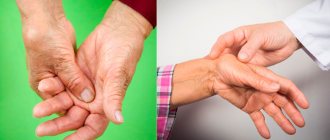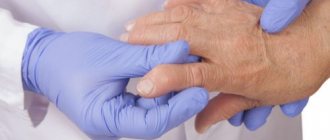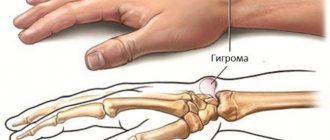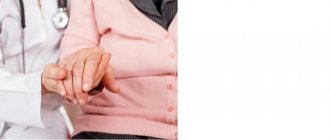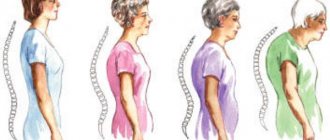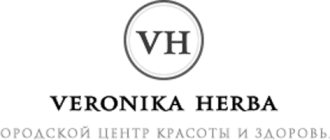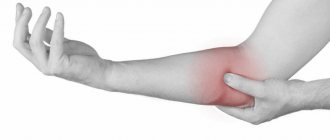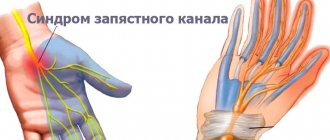How to remove a bump on your finger. Bumps on the knuckles: causes, symptoms and treatment
26063
Quite often, in older people, you can notice bumps on the joints of the fingers, the causes and treatment of which are closely interrelated. These pathological growths not only do not look aesthetically pleasing, but also often cause complications and deterioration of the joint joints. In addition, in the last few years, the number of young people who suffer from similar disorders with rapid progression has increased.
Reasons for violation
Not only do lumps grow on the joints of the fingers; quite often they form on the wrist joint, which significantly complicates the course of the pathology. There are several reasons that can provoke the appearance of seals:
- Intense load, causing a lump to appear on the joint of the hand. This is most often observed in young people whose professional activities involve regular physical activity on this part of the body. As a result, friction in the joint increases, which negatively affects its function and appearance.
- Poor nutrition with a lack of vitamins and minerals. This factor can provoke pathology in very young people and even teenagers, whose development of the musculoskeletal system directly depends on the amount of useful components in the daily diet.
- Disorders of metabolic processes and the development of thyroid pathologies, type 1 diabetes. This condition quite often provokes pathological growth of bone tissue, which leads to the appearance of hard formations in the joint area.
- Chronic rheumatoid arthritis with regular relapses. The disease is characterized by an inflammatory process in the joint with gradual destruction of cartilage and proliferation of bone tissue.
- Arthrosis is degenerative-dystrophic changes in articular joints, characterized by the gradual resolution of cartilage and the formation of osteophytes or bone growths.
- Polyarthritis of unspecified etiology with damage to many small joints. Typically, the pathology affects elderly patients and is chronic. It becomes one of the main reasons for the appearance of a lump on the joint of the thumb.
- Gout of acute and chronic forms. As a rule, the disease first affects the toes and starts with the big toes, but there are cases when the pathological process develops at the joints of the hands and then moves to the feet.
- Bad habits, for example, alcohol abuse on a regular basis and long-term smoking lead to metabolic disorders. This almost always leads to some kind of dysfunction on the part of organs or systems.
- Frequent hand injuries - sprains, fractures, dislocations.
Differential diagnosis
Quite often, gout is mistaken for other diseases. This is due to the similarity of the clinical picture of the pathologies. Differential diagnosis is carried out between gout and the following diseases:
- Purulent arthritis. Occurs after an infectious disease. Purulent arthritis is characterized by hyperthermia. The diagnosis will be clarified with the help of additional studies;
- Rheumatoid arthritis. It occurs more often in women than in men. The final causes of the development of pathology are not fully understood. Unlike gout, rheumatoid arthritis does not increase the concentration of uric acid;
- Psoriatic arthritis. Occurs against the background of skin manifestations of psoriasis;
- Pyrophosphate arthropathy. It differs from gout by characteristic changes on x-ray and in the analysis of synovial fluid;
- Osteoarthritis. The disease not only has similar symptoms, but can also occur against the background of gout.
Only a doctor can distinguish diseases and make an accurate diagnosis. Self-medication can lead to aggravation of the condition and the development of undesirable consequences.
Bumps on the fingers to which doctor? Treatment methods for fingers with arthritis
- To anesthetize the joint - corticosteroid drugs are most effective at this stage, but they are prescribed only in advanced cases. Non-hormonal medications belonging to the NSAID group can relieve pain. The patient is prescribed tablets - local analgesics. They relieve inflammation and, with complex therapy, effectively treat complications of arthritis (swelling, immobility).
- Restore mobility - for these purposes, finger exercises are used, which, in combination with the use of NSAIDs and drug blockade, turns out to be extremely effective for arthritis. Exercises are prescribed during the period of remission, only after the inflammation has been overcome.
- Eliminate the causes of inflammation. For autoimmune diseases, therapy involves the use of drugs that suppress the immune system; for gout, medications are needed to help remove uric acid, as well as normalize metabolism. Good results, especially in diabetes mellitus, can be achieved with homeopathy. If therapy is prescribed correctly, normal synthesis of substances is restored. Surgical treatment of the affected joints of the fingers may be required for purulent arthritis if, after a course of antibiotics, the infection continues to spread.
- Eliminate the consequences of inflammation and achieve sustainable remission. For these purposes, physiotherapy is prescribed, including: finger massage for arthritis, acupuncture, magnetic therapy and warming. Cosmetic surgery on the finger after joint arthritis helps eliminate external defects. Bumps and curvature of the joints are removed from the fingers, and mobility is fully restored. Patients are recommended to regularly undergo preventive treatment in a sanatorium, this will reduce the likelihood of recurrence of the disease.
Forecast
The prognosis for life with diagnosed gout is favorable. Most patients with the disease live to old age. The quality of life improves by following measures to prevent relapses of the disease and undergoing regular examinations by a doctor.
You can get tested for gout at the Yusupov Hospital. The clinic is located in Moscow. The hospital’s equipment makes it possible to accurately determine gout at the initial stages of development. After receiving the research results, experienced doctors develop individual treatment tactics. Modern therapy helps to quickly alleviate the patient's condition. The drugs used meet quality and safety standards. To make an appointment with a rheumatologist, call the contact center of the Yusupov Hospital 24 hours a day, any day of the week.
Make an appointment
The lump on the finger under the skin hurts. Symptoms
Polyosteoarthrosis
The first signs of trouble appear long before a lump appears on the joint of the finger. At the early stage of the disease, mainly at night, aching pain occurs that goes away during the day. The joints may swell slightly and crackle when moving. Later, seals appear on the joints; their diameter ranges from approximately 1 to 7 mm. My hands hurt. Limitedness arises and... Bumps usually appear on the joints between the phalanges of the fingers, as well as on the lateral surface of the joints. The shape of the fingers changes, they become like a spindle. Bumps may also appear at the base of the thumb. This type of arthrosis is called rhizarthrosis.
Hygroma
The subcutaneous lump jumps up suddenly and grows without any painful sensations, turning into a spherical growth over the joint. The lump has clear contours, when pressed it decreases in size, some of the liquid gets inside the joint and is not fused to the skin. May appear on both sides of the palm. When the hygroma grows to a large size, it can interfere with certain movements and looks very, not aesthetically pleasing.
Find out more about the disease described above from orthopedic traumatologist Nikolai Antonovich Karpinsky:
Infectious arthritis
As a rule, they occur, less often - on the middle, ring or little finger. Fever and intoxication of the body are possible. The joints swell, the skin on them turns red, and a local increase in temperature in the inflamed joint is possible. It is difficult to bend and straighten your fingers because of the bumps on the tendons of the little finger and ring finger, and movements are painful.
Gouty arthritis
The attack begins suddenly with acute pain in a joint, most often the thumb. This usually happens at night, the pain is so severe that it is impossible to touch the sore spot, swelling of the joint appears, and the skin over it darkens. The most common place for a lump to appear is on the thumb. The growths that occur are called tophi. They are a collection of uric acid crystals. The attack lasts from 3 to 10 days, then passes. After some time, the attack repeats.
Rheumatoid arthritis
The disease usually begins with swelling of the knuckles of the middle and index fingers. Sometimes the ring finger is also caught. Joint pain occurs that can last for years. A special feature is the symmetry of the pain; if pain begins in the right hand, then it immediately appears in the left. Usually there is stiffness in movement in the morning and swelling of the joints in the evening. It is difficult to bend and straighten your fingers. Bumps are formed that deform the fingers, they acquire bends and become similar in shape to a spindle or the neck of a swan.
Growth on the phalanx of a large one. Hallux valgus
In fact, it’s not even a growth, but a protrusion of the big toe, or a violation of the anatomy of the foot. In other words, this is an acquired skeletal deformity. For what reasons does this disease appear? It could be:
- Tight, uncomfortable shoes. When the foot remains in an uncomfortable position for a long time, the bones begin to shift so that they take on shapes similar in shape to a pair of shoes.
- Increased load. Most often we are talking about athletes. The risk group includes people who professionally lift weights (bodybuilding, weightlifting) or who have prolonged activity on their feet (dancers, football players). Increased load on the forefoot is also present in those women who prefer to walk in high heels. A pair of shoes leads to such consequences if the heel is over 5 cm.
Special correctors for the foot will allow you to restore the disturbed alignment of the bones in the big toe area, and the growth will gradually disappear
To correct the situation, you first need to eliminate the source, the cause of this condition. Of course, few people will decide to give up professional training, but you can temporarily limit the load. If it's all about the shoes, then you need to replace them with anatomically correct ones. By the way, it is absolutely not necessary to buy shoes in specialized stores, because they cost a lot of money there.
It is enough to purchase special correctors. They can be made of plastic or silicone and are inserted into shoes from the inside. Such correctors fix the finger in the correct position and evenly distribute the load. They should be worn for a long time, several months.
Over time, the arch of the foot will acquire its previous correct shape. Most likely, the patient will be prescribed a course of anti-inflammatory or painkillers, since hallux valgus is usually combined with other diseases (bursitis, arthrosis, etc.).
The lump on my finger hurts. What species are found?
Hygroma is a benign tumor formed from the articular membrane. Usually located above the joint towards the nail plate. The skin around the bump becomes inflamed, red and itchy. There are grains inside the cone. The nail may become deformed. The pain is nagging. The finger bends poorly and goes numb.
To eliminate hygroma, it is recommended to remove the load and use an elastic bandage. The main reason for its occurrence is hereditary predisposition. It mainly affects women under 30 years of age.
Gout is a nodular formation containing uric acid in crystals. It has a hard consistency, reminiscent of cartilage with clear contours. It is visually clear that there is a light liquid inside. Gout forms near the joint over a long period of time. If the node becomes inflamed, a fistula may appear from which fluid leaks. The skin around the bump is rough and uneven.
Sometimes they can soften and dissolve. In general, gout exists for many years, causing discomfort.
Heberden's and Bouchard's nodes are hard formations on the joints (distal, proximal) of the index and middle fingers of both hands. It mainly affects women in adulthood. The fingers become red and swollen, and the person feels pain, especially at night. Sometimes the nodules may burst. The bone surfaces are uneven, the gap narrows, and osteophytes grow.
Rheumatoid nodules (arthritis) are painless lumps. Formed on the bend of the finger under the skin. Make it difficult to move your finger. Occurs in 30% of the population. The joints on the index and middle fingers usually swell. The pain spreads from the knuckles to the large joints of the hand. Due to the seals, the fingers become deformed. In the morning they are difficult to bend, and by evening they swell.
Infectious bumps (arthritis) - lumps form on the tendons of the thumbs, sometimes on the ring and little fingers. The patient feels pain when bending and straightening. The joints on these fingers become swollen and the skin becomes red and hot to the touch.
Reasons for the development of the disease
Hyperuricemia is the main cause of gout. This condition occurs in the following cases:
- Obesity. The diet of a gout patient included an excessive amount of fatty foods, simple carbohydrates and high-calorie foods. In addition, eating large amounts of meat increases the risk of developing gout;
- Alcohol abuse;
- History of psoriasis and hypertension;
- Hereditary predisposition.
An increase in the concentration of uric acid occurs as a result of the fact that healthy kidneys are not able to filter its sharply increased amount. Kidney pathology does not allow them to process even normal amounts of uric acid.
A lump on the finger under the skin. Treatment with folk remedies
It will not be possible to achieve a complete cure using traditional medicine alone. A lump on a finger joint can disappear only with an integrated approach to the problem. But it won’t hurt to use traditional methods of treatment, since herbal ingredients and vitamins will come in handy with the constant use of medications.
For hand disease, treatment with folk remedies advises using lotions with flour, honey and aloe. This compress should be used every night and removed only in the morning. Using a copper plate also gives good results. First, it must be heated over a fire, then kept in a salt solution for several hours. After which the plate is applied to the affected joints. Moreover, you need to keep it tied up for about four days. It is constantly necessary to rub the joints with alcohol or alcohol tinctures. This is done so that the blood vessels dilate, the blood begins to flow into the vessels, and the tissue begins to recover. Garlic, cabbage leaves with honey, onions, and camphor oil are perfect for night compresses. You can make a different compress every night, using these components in turn. In addition to home medicine, to treat lumps on the palm, you can use warming the joints with hot sand from the beach, swimming in healing waters or blue clay. The best solution would be to visit a medical sanatorium, where they will tell you how to treat joint diseases, and also show you how to do certain procedures.
Basic principles of treatment
To determine the origin of the cones, a medical examination is carried out, including instrumental and laboratory methods:
- radiography;
- computed tomography;
- general and biochemical blood test;
- puncture;
- histological examination.
Histology in this case is necessary to exclude malignant neoplasms. Consultations, diagnosis and treatment are carried out by rheumatologists and traumatologists. Through diagnostics, not only the nature of local changes is revealed, but also possible disorders of internal organs and metabolic processes.
Indomethacin ointment is indicated for use for pain, swelling and inflammation caused by diseases of the musculoskeletal system
After the examination results are ready, we can talk about what and how to treat the disease. Currently, drug therapy is widely used, including the use of the following groups of drugs:
- anti-inflammatory non-steroidal drugs (Indomethacin, Nimesil);
- corticosteroids (Hydrocortisone, Metipred);
- cytostatics (Colchicine, Fluorouracil);
- chondroprotectors (Teraflex, Artra, Dona);
- anti-gout medications (Allopurinol, Orotic acid, Anturan, Entamide).
To cure bumps, topical preparations are also used - gels, ointments and creams. The composition of such drugs includes anti-inflammatory components, and the therapeutic effect is achieved by direct action on the pathological focus.
Theraflex drug is designed specifically for the treatment of joint diseases by stimulating the formation of cartilage
An integral part of complex therapy are physiotherapeutic procedures that help cope with pain and swelling, as well as help improve metabolic processes in tissues.
We advise you to read: Rheumatoid arthritis of the fingers
For diseases that are accompanied by symptoms in the form of growths on the hands, it is useful to do the following procedures:
- electrophoresis and phonophoresis;
- UHF;
- magnetic therapy;
- paraffin applications;
- medical laser;
- applications with therapeutic mud.
For joint diseases, exercise therapy is recommended - with the help of specially selected exercises, the motor ability of the fingers is improved, and the bumps are reduced in size. Gymnastics should be done daily, avoiding pain.
The basic exercises are not at all difficult and can be performed at any time:
- spread and close fingers;
- bend and straighten the fingers of the left hand with the help of the fingers of the right, and vice versa (passive movements);
- grab and squeeze small and elastic objects with the whole hand - for example, a rubber ball;
- stretch the rubber band or ring with your fingers.
Surgical operations
Unfortunately, conservative methods are not always effective, and in this case they resort to surgical intervention. Under local anesthesia, protrusion of the articular membrane (hygroma), tophi containing uric acid granules, as well as other pathological neoplasms are removed. After removing the cones, the resulting wound surface is washed with an antiseptic solution and sutured.
During the rehabilitation period, medications, physiotherapy, manual massage and other therapeutic procedures are prescribed.
Physiotherapy
When pain, inflammation and other disorders subside, you can include therapeutic exercises in your schedule. An expander or a small ball, for example, a tennis ball, will be an excellent assistant for this. The process of gymnastics is extremely easy; it is enough to repeat certain movements several times a day:
- clench/unclench your fist;
- flexion/extension of fingers;
- squeezing an expander or ball.
Regular gymnastics will improve blood circulation, improve nutrition of tissues damaged due to pain, and return joints to their former plasticity and flexibility.
Clinical picture
Depending on the cause and type of pathology, the symptoms that bother a person differ. If the bumps are caused by arthritis or arthrosis, the patient often feels pain in the area of the lump, which intensifies with stress or household manipulations. In some cases, pain accompanies the patient at night, which disrupts sleep.
A person becomes irritable, feels drowsy, has a headache, impaired memory and concentration, and decreased performance. The skin in the area of the growth may become stretched and red, which indicates the formation of a hygroma. Local hyperthermia and swelling are observed. The swelling may periodically subside and reappear.
As the pathological process progresses, the patient's condition worsens. The growths increase in size, the pain intensifies and requires the use of analgesics. The skin in the area of compaction becomes even tighter, thinner, becomes dry, and flakes off. As the lump enlarges, the mobility of the joint joints is impaired. The person loses the ability to take anything and often drops objects.
If maintenance therapy is not provided at this stage, the patient becomes disabled, unable to perform daily manipulations and care for himself. In this case, the treatment will not be effective and will not be able to alleviate the patient’s suffering.
Drug therapy
When a lump forms on the joint of the index finger, it must be treated comprehensively. After identifying the cause of the pathology, the specialist develops an individual treatment plan aimed not only at eliminating pronounced symptoms, but also at treating the underlying disorder. The classic scheme involves taking the following means:
- The group of non-steroidal anti-inflammatory drugs is considered the main treatment for severe symptoms and is often used as an emergency treatment. Medicines relieve pain, relieve signs of inflammation and slow down the progression of the pathological process. There are several forms of release, but the most popular and in demand are tablets, as well as external forms in the form of ointments and gels. The best remedies from this group will be Diklak, Voltaren, Dikloberl. They are allowed to be used for no longer than 10 days in order to eliminate acute symptoms. Longer use may cause complications from the gastrointestinal tract, brain and heart.
- Chondroprotectors are most often prescribed in cases where the bumps are the result of arthritis or arthrosis. Agents from this group are used to restore damaged cartilage tissue and slow down the pathological process. It is recommended to take them in courses of 3–6 weeks, depending on the severity of the patient’s condition. The following medications are considered the most effective: Teraflex, Chondroitin. There is also the drug Arthrocin, available in tablets and gel for external use. Such medications usually contain glucosamine and chondroitin, which are vital substances for the normal functioning of joints throughout the body.
- Antibacterial drugs are used when the cause of the growth is rheumatoid arthritis or arthritis of an infectious nature. They are necessary to suppress the activity of pathogens and eliminate the symptoms of inflammation. At home, tablets are more often used; in hospital settings, injections into a muscle or vein are considered effective. The most common medications in this group will be: Ceftriaxone, Augmentin, Erythromycin. It is recommended to take the drugs in courses of 10-14 days.
- Preparations to improve blood circulation and microcirculation in the affected area. They allow you to dilate the patient’s blood vessels and deliver useful components and oxygen through the movement of red blood cells. They have a pronounced antispasmodic effect and accelerate recovery. The best remedies are: Pentoxifylline, Actovegin, Trental. They can be taken in tablet form or as intravenous drip infusions. The duration of the therapeutic course is at least 10 days.
- Glucocorticoids are used in cases of extensive lesions with severe pain and the inability to relieve it with conventional means. They are usually administered intramuscularly for 3-5 days. As a rule, this is enough to eliminate acute pain. Dexamethasone or Prednisolone are most often prescribed.
Vitamin complexes are used as maintenance therapy to help the body fight the pathological process. Complivit is considered one of the best.
Physiotherapy
The effectiveness of treating a lump on the phalanx depends on the complexity of the procedures performed. Along with medications and ointments, physiotherapy should be present in the patient’s life. They are as follows:
- electrophoresis with anti-inflammatory solutions;
- magnetotherapy (principle of action);
- laser therapy;
- paraffin and mud applications;
- shock wave therapy;
- ultrasound.
Physiotherapy has an effect at the initial stage of the disease and helps speed up the treatment process. In more advanced situations, such procedures may be useless.
External therapy
Ointments and gels may be present in treatment as an auxiliary, but not the main means. The most popular and effective are:
- Bystrum gel;
- Ibuprofen;
- Fastum-gel.
The drugs presented relieve pain, swelling, and improve blood circulation.
Bishofite can have a beneficial effect on buds. Its use involves compresses or baths. This substance is included in many painkillers and restorative formulations.
Prevention measures
Preventing pathology is not difficult if you follow a few simple rules. It is recommended to carefully monitor your diet and diet, give up bad habits, and normalize your work and rest schedule.
Reducing the load on your hands will also have a beneficial effect on the condition of your joints. If the first signs of a disorder appear, it is recommended not to postpone a visit to a specialist, since this will be the only chance to cure the bumps forever. Otherwise, the pathology progresses.
In advanced stages, it is impossible to completely get rid of seals, but there are many ways to alleviate a person’s condition and prevent damage to other joints.
Content
Sudden bumps on the fingers are not a separate disease, but can accompany various types of diseases (based on joint diseases). Bumps on the hands bring not only physical discomfort, but also visual discomfort, since they do not look the best and are in plain sight.
Use of physical therapy
The effectiveness of medications is not always sufficient for a comprehensive effect. In this case, experts recommend taking a course of physical procedures that will help restore the functioning of the affected joints and relieve pain.
Magnetic therapy is used quite often because it brings good results. Permitted for use in the absence of severe forms of dermatological pathologies. Therapy is carried out in a special room in a medical institution and lasts from 20 to 40 minutes. For home use, you can purchase a miniature, portable device that has the same good therapeutic effect. The course consists of 10−15 sessions.
Paraffin therapy and mud applications are also done in a medical institution. Special compositions are applied to the affected areas and left for 20-30 minutes. Such treatment is also considered quite effective and can improve the patient’s condition. To achieve results, it may take from 10 to 25 sessions.
Electrophoresis using drugs with an analgesic effect can relieve acute symptoms. As a rule, Novocain or Analgin is used. Special pads soaked in a medicinal solution are applied to the affected area. Non-steroidal anti-inflammatory drugs are often used to ensure lasting results. The course consists of 10-20 procedures of 30 minutes each.
- Treatment of gout with folk remedies, how to treat gouty arthritis on the toes
